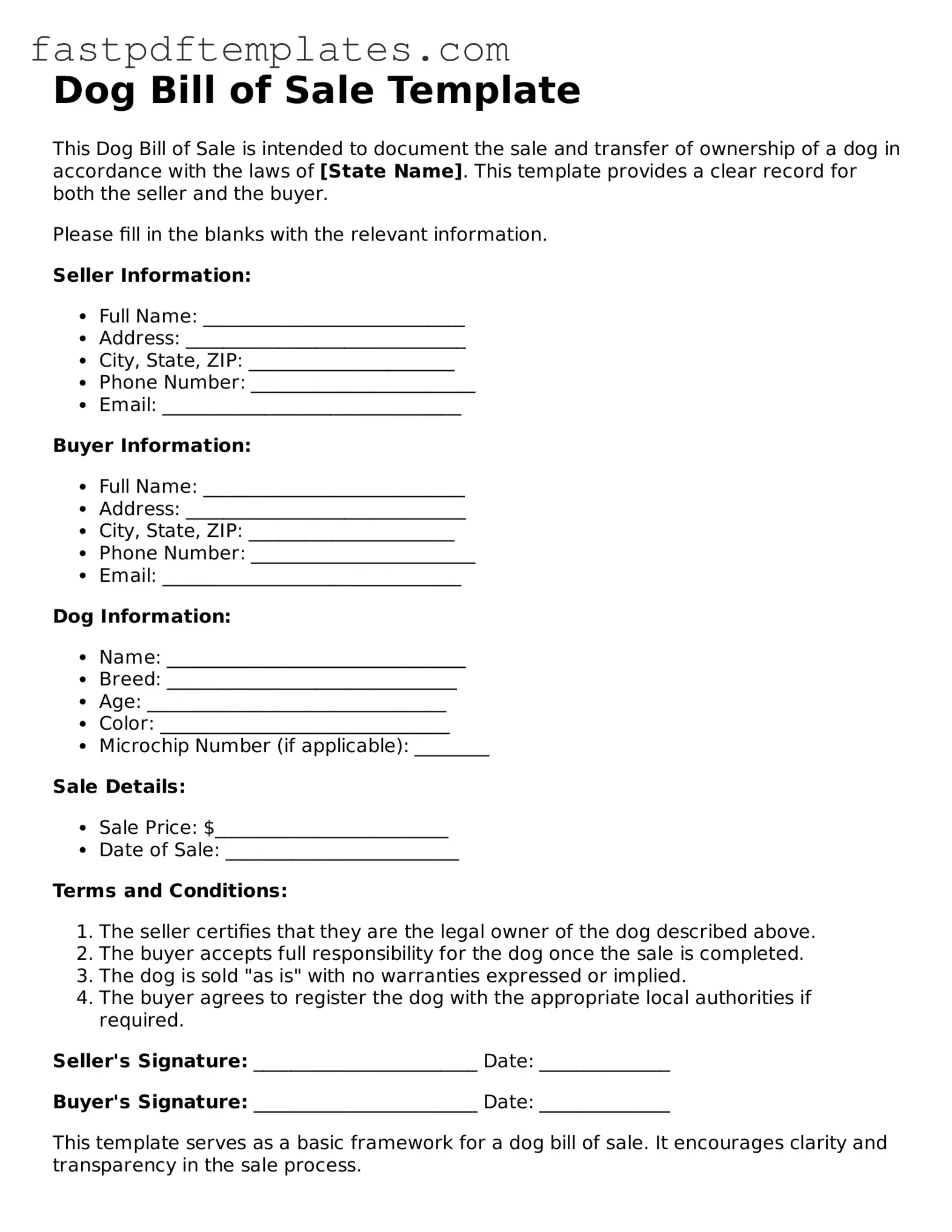The Dog Bill of Sale form is similar to a Vehicle Bill of Sale. Both documents serve as proof of transfer of ownership. Just as a Vehicle Bill of Sale includes details about the vehicle, such as make, model, and VIN, the Dog Bill of Sale lists information about the dog, including breed, age, and any identification tags. Both documents protect the interests of the buyer and seller by providing a record of the transaction.
Another similar document is the Bill of Sale for Personal Property. This form is used for the sale of various personal items, like furniture or electronics. Like the Dog Bill of Sale, it outlines the specifics of the item being sold, including condition and purchase price. Both forms help establish clear ownership and reduce disputes after the sale.
The Horse Bill of Sale is another related document. Just as the Dog Bill of Sale confirms the sale of a dog, the Horse Bill of Sale does the same for horses. It includes details about the horse, such as breed, age, and any health records. Both documents ensure that the buyer receives all necessary information about the animal being purchased.
The Boat Bill of Sale shares similarities with the Dog Bill of Sale as well. Both documents provide a record of ownership transfer and include essential details about the item. For a boat, this would include the make, model, and hull identification number. Both forms serve to protect both parties in the transaction.
The RV Bill of Sale is comparable to the Dog Bill of Sale in that it documents the sale of a recreational vehicle. This form includes information about the RV, such as its make, model, and VIN. Both documents are essential for proving ownership and ensuring that the buyer has all necessary details about the vehicle or animal being purchased.
The Equipment Bill of Sale is another similar document. This form is used for the sale of equipment, like tools or machinery. It outlines the specifics of the equipment, including its condition and price. Like the Dog Bill of Sale, it provides a clear record of the transaction and helps prevent misunderstandings between the buyer and seller.
The Firearm Bill of Sale is also akin to the Dog Bill of Sale. It documents the transfer of ownership of a firearm and includes important details such as the make, model, and serial number. Both documents are crucial for legal purposes and help ensure that the transaction is transparent and properly recorded.
Lastly, the Business Bill of Sale can be compared to the Dog Bill of Sale. This document is used when selling a business or its assets. It includes details about the business, such as its name, location, and any included assets. Both forms serve to formalize the transfer of ownership and protect the rights of both parties involved.
